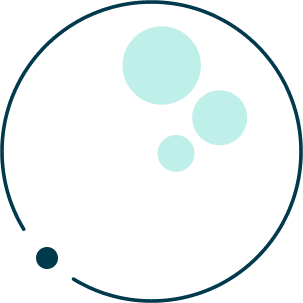Ozone Treatment
Ozone treatment for pain or ozone therapy (oxygen-ozone) is a minimally invasive technique we use to reduce inflammation and pain in joints, tendons, muscles and, in selected cases, intervertebral discs. We always apply it with image control (ultrasound or X-rays) and with solutions tailored to each patient.

What exactly is medical ozone and how does it work?
Ozone (O₃) is a molecule consisting of three oxygen atoms. In pain medicine we use medical ozone, which is instantly generated from medical oxygen by certified equipment. It is not “air” nor is it injected blindly: it is a precise O₂-O₃ mixture that we administer locally (intra-articular, periarticular or intradiscal) and always image-guided.
Key concepts
- Therapeutic concentration: expressed in µg/mL (“gamma”). For musculoskeletal infiltrations we usually work in
low-moderate ranges(≈10-40 µg/mL) , adjusted to the tissue and indication. In intradiscal we use specific ranges published in the literature and internal protocols. - Local mechanism of action: ozone reacts rapidly in tissue and generates biochemical signals (ROS and LOPs) that modulate inflammation (↓ NF-κB) and activate endogenous antioxidant pathways (↑ Nrf2). Together, this may reduce pain and improve tissue function.
- Additional intradiscal effect: in disc herniation/protrusion, the O₂-O₃ mixture favors mild chemonucleolysis (dehydration/contraction of the nucleus pulposus) and decreases pressure on the nerve root in selected cases.
At MIVI we do not use intravenous ozone or other systemic routes. Our indications are local and with image control.
For which pathologies is it indicated
We indicate ozone therapy when, after a complete assessment, we consider that it can provide benefit within an overall treatment plan. It is especially useful in:
- Myofascial syndromes
- Discogenic pain
- Hip osteoarthritis pain
- Knee osteoarthritis pain
- Shoulder osteoarthritis pain
- Back pain
- Low back pain
- Tendinopathies (selected cases) as part of a plan that includes rehabilitation.
- Myofascial syndrome (trigger points, chronic muscle pain).
The specific indication (intra-articular, periarticular, paravertebral or intradiscal) is defined after clinical history, examination and review of tests.
The Procedure
- Diagnosis and planning. Medical assessment, objectives and informed consent.
- Guidance by image.
- Ultrasound for joints, tendons and muscle planes.
- Fluoroscopy (X-ray) for spinal or intradiscal approaches.
- Local anesthesia and, if necessary, light sedation.
- Infiltration of the gas in the target point. Outpatient procedure (≈10-20 min).
- Same day discharge with activity and physical therapy recommendations.
What results can I expect?
Many patients notice pain relief and improved function within weeks. The duration of the effect depends on the pathology and personal factors; in osteoarthritis, the benefit is usually temporary and may require reinforcement combined with
Risks and side effects
Ozone therapy is, in general, well tolerated when performed with medical equipment and image control. Even so, they may appear:
- Transient pain or pressure sensation in the infiltrated area.
- Hematoma or local irritation.
- Dizziness/vasovagal dizziness, rare.
- Infection or injury of nearby structures (very infrequent with guided technique and rigorous asepsis).
Important: at MIVI we do not perform intravenous ozone or non-validated routes of administration for the treatment of pain. We only use local and intradiscal infiltrations in specific indications and standardized protocols.
Contraindications and precautions
- Active infection in the area to be treated.
- Uncontrolled coagulation disorders or anticoagulation without prior adjustment.
- Known allergy to local anesthetics.
- Pregnancy (individual assessment).
- Pain without clear diagnosis or specific indication.
Preparation and after the session
- Tell us if you take anticoagulants or antiaggregants.
- Come with comfortable clothes; you will be able to leave on your own.
- Avoid intense exercise the day of the procedure. Resume progressively according to the guideline.
- Maintain the prescribed physical therapy/exercise plan.
Frequently asked questions about ozone treatment
Who cannot receive ozone therapy?
Relative contraindications for systemic ozone therapy include uncontrolled hyperthyroidism, thrombocytopenia, severe cardiovascular instability and convulsive states. For medical prudence, it is also not advisable to apply systemic ozone therapy to pregnant patients.
Who is an ideal candidate for Ozone Therapy?
It is an excellent option if you suffer from chronic or inflammatory pain and are looking for an alternative or a complement to traditional pharmacological treatments. A medical specialist will evaluate your case to confirm if you are a good candidate.
Does ozone accelerate healing?
Yes, ozone can accelerate healing. By increasing the amount of oxygen in the body, it strengthens the immune system and promotes cell regeneration, which is the process of replacing or repairing damaged cells.
What are the risks of ozone therapy?
Applied by a professional, ozone therapy is very safe, with a very low incidence of adverse effects (0.0007%).[21] Side effects are rare and mild, such as discomfort at the site of application, temporary tiredness, nausea or headache. The risks increase if the technique is not correct.
What is an Ozone Therapy session like? Is it painful?
A session is a quick procedure (20-25 minutes) that consists of applying ozone through infiltrations in the area to be treated. The discomfort is minimal, similar to a normal injection, and it is a very well tolerated treatment.
Is the treatment safe and does it have any side effects?
Yes, it is one of the safest therapies when performed by a specialized physician. Side effects are extremely rare and, if they occur, they are usually mild and temporary, such as minor discomfort in the area of application.

Our customers say
Insurance companies
Ask your MIVI centre for information on the agreements with insurance companies.










